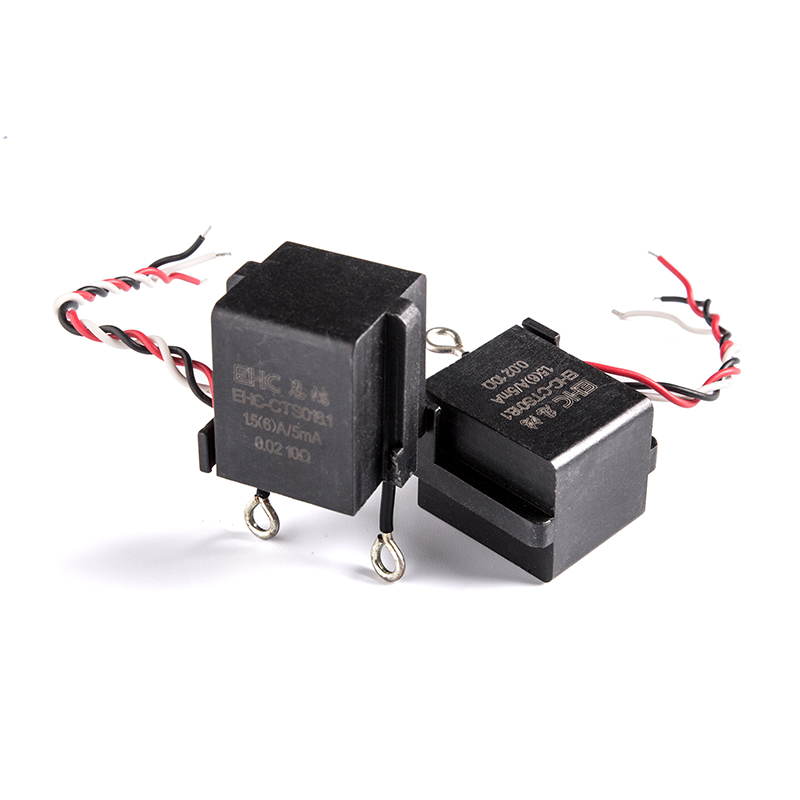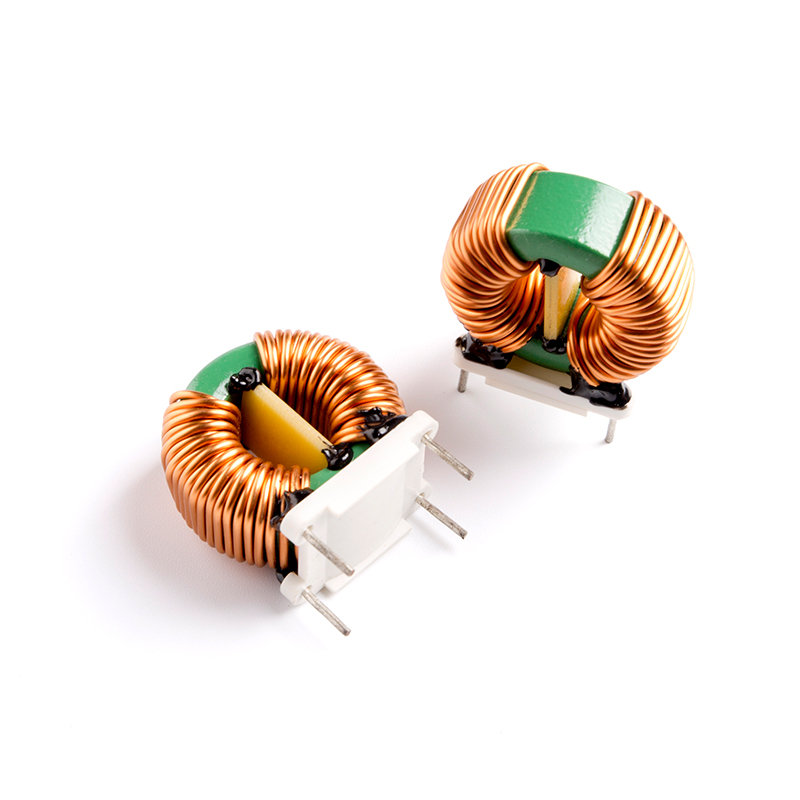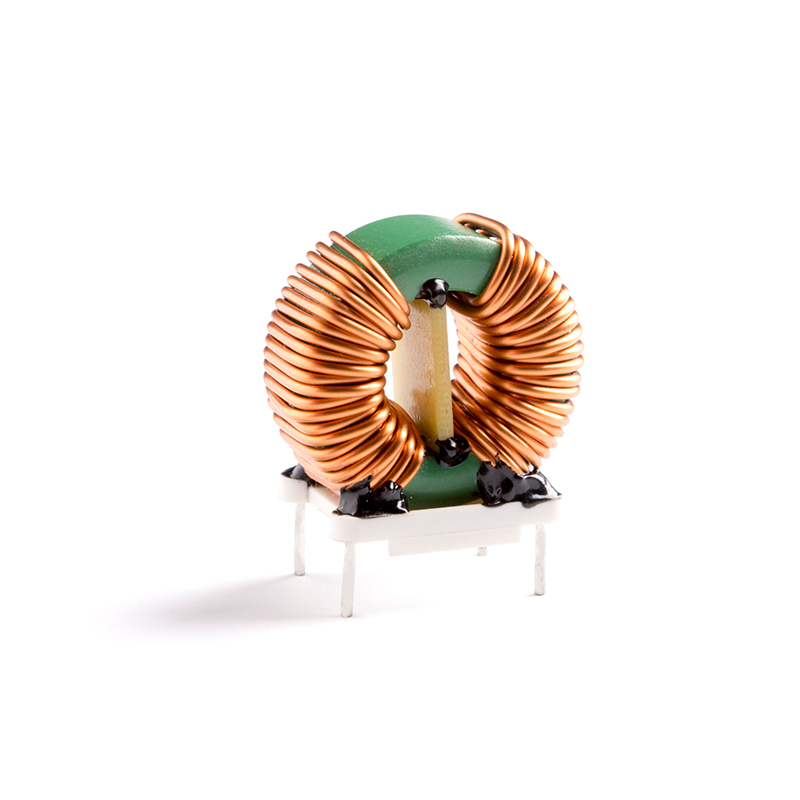A current transformer (CT) is a transformer used to measure the alternating current in a circuit. It consists of a primary coil, which is the conductor that delivers current to the circuit under test, and a secondary coil (or coils) that connects to a meter or other instrumentation. The current in the secondary coil is directly proportional to the current in the primary coil.
Like any other electrical transformer, a current transformer has a primary winding, a single turn (conductor), a core, and a secondary winding; the physics is the same as for a voltage transformer. A high AC current that is too strong for the meter passes through the primary coil, creating a magnetic field in the iron core, which then passes through the magnetic field in the iron core to produce a low current in the secondary coil to safely measure the actual current.
Current transformers convert the current from a high value to a low value (not voltage).
Common uses of CT
The two most common uses for current transformers include:
1. Measurement and monitoring of electrical energy consumption
Current transformers are widely used in metrology because they can safely measure large currents in lines.
Today, it is impossible to find instruments that can effectively measure high voltages and high currents, which is why transformers are used to accurately measure current and voltage in circuits, no matter the size of the circuit. Thanks to advances in solid-state electronics, electricity meters are able to sense very low currents with great precision. This allows the use of very small instruments or the bundling of multiple instruments in a smaller enclosure, creating opportunities for multi-customer metering systems.
Due to the instrument's ability to detect small currents and the low burden on the circuits in the measuring instrument, the iron core of the transformer can be made very small. It also enables the transformer's secondary winding to be made very small to carry very low currents, such as 100 mA or 0.1A.
These small currents have the added benefit of lowering the secondary voltage to allow the clamping mechanism to make the current transformer intrinsically safe.
This is why self-shorting, mA secondary and self-shorting current transformers are the first choice for auxiliary metering. In addition to their safety, they take up very little space in the wiring tray of the switchboard and do not require shorting blocks.
Due to their small size, CTs are also very effective in measuring the power usage of almost every electrical circuit in a given part of a building or any industrial facility. This makes it relatively easy to bill customers based on electricity usage.
2. Protect instrumentation and power grid
Current transformers are also used to protect electrical infrastructure from overloads and short circuits. These are called protected instrument transformers.
In these applications, the secondary leads of the current transformers are connected to sensitive measuring equipment called protective relays.
These relays trip a protective device (circuit breaker) when there is an overcurrent in the circuit, either caused by an overloaded circuit or usually by a short circuit.
In protection applications, the current transformers must be sized differently, mainly because the burden on the protective relay may be greater than that of the measuring instrument. The core must also be large enough to avoid saturation of the CT when high currents are experienced on the primary. It is during these overcurrent periods that the CT must maintain its proportionality to ensure adequate protection. This may be one of the reasons for the larger size of the protective transformer.
Current transformers are an important part of metering. They provide a safe and highly accurate method of measuring the current used in a home or across the electrical grid. Its widespread use makes it a key component of electrical infrastructure and generation around the world.
How Are Current Transformers (ct) Used In Metering?
Recommended Products
-
 View More >>
View More >>
Non-Toroidal C-Type Cut Amorphous Nanocrystalline Cores
Industry: Amorphous Nanocrystalline Core
-
 View More >>
View More >>
EHC-VCT Series for Power supply
Industry: Current Transformer
-
 View More >>
View More >>
Transformers Cores Amorphous Nanocrystalline Cores
Industry: Amorphous Nanocrystalline Core
-
 View More >>
View More >>
Amorphous Nanocrystalline Inductor Cores
Industry: Amorphous Nanocrystalline Core
-
 View More >>
View More >>
CTS Series Terminal High Precision Amorphous Nanocrystalline Current Transformers
Industry: Current Transformer
-
 View More >>
View More >>
Rectangular hysteresis loop Cores
Industry: Amorphous Nanocrystalline Core
-
 View More >>
View More >>
High Linear Current Transformers
Industry: Current Transformer
-
 View More >>
View More >>
Common Mode Choke Amorphous Nanocrystalline Inductors
Industry: Amorphous Nanocrystalline Inductors

 English
English 中文简体
中文简体 Deutsch
Deutsch 日本語
日本語

